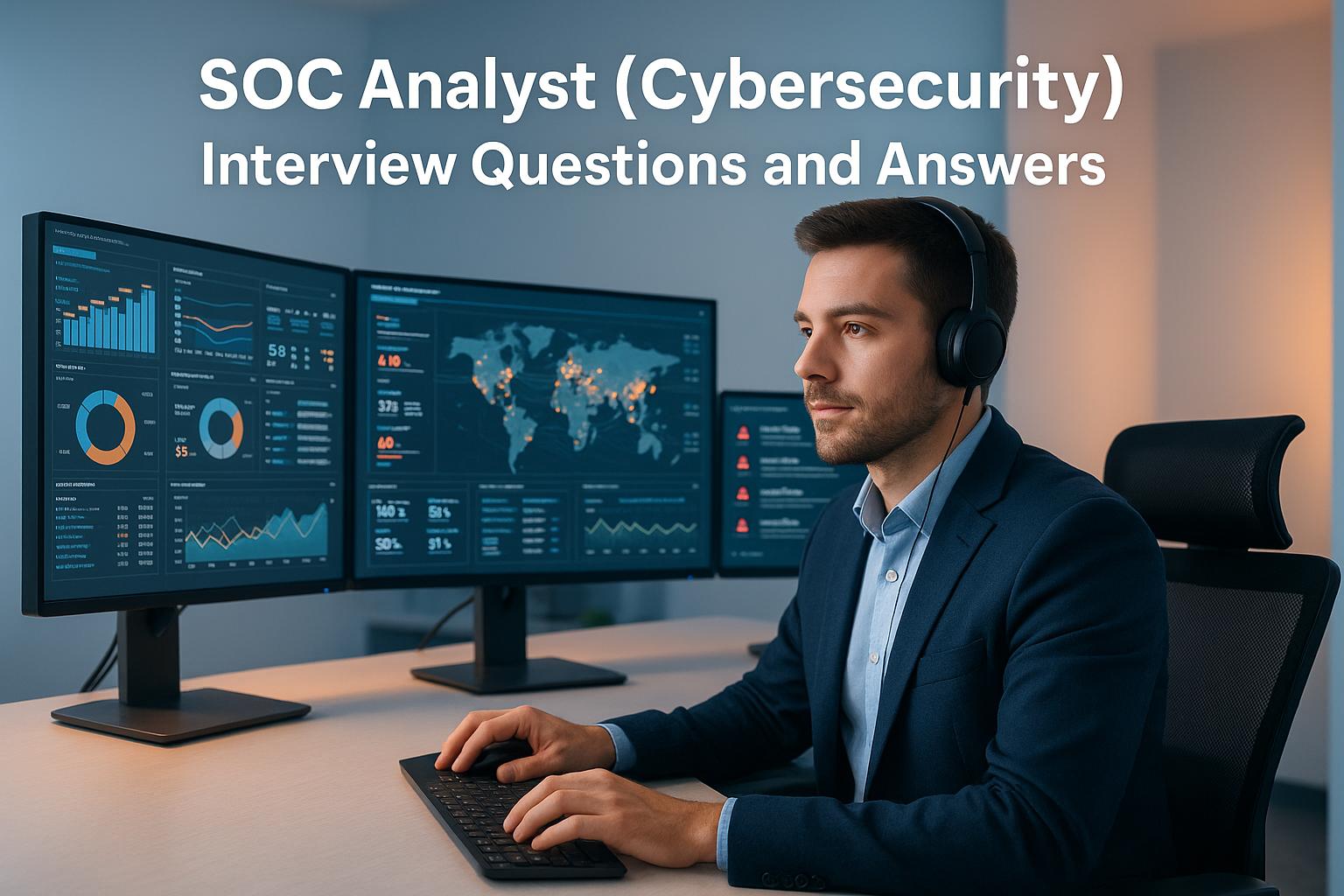The demand for cloud cybersecurity professionals is at an all-time high. With businesses migrating to the cloud and cyber threats on the rise, this field offers stability, high earning potential, and meaningful work. But diving into cloud cybersecurity can feel daunting, especially for beginners or those transitioning from non-technical roles.
This article presents a step-by-step roadmap based on a detailed video guide, breaking down the journey from a novice to a well-rounded cloud cybersecurity professional. Whether you're starting from scratch or looking to upskill, this roadmap will provide you with the knowledge, certifications, and practical skills required to thrive in the field while staying resilient against AI-driven automation.
Why Cloud Cybersecurity is the Future
Organizations across industries are embracing cloud solutions for scalability and efficiency. However, this shift introduces unique security challenges, such as securing distributed systems, managing containerized workloads, and automating compliance. As AI increasingly automates repetitive tasks, professionals specializing in judgment-based roles - like security architecture and compliance - will remain indispensable.
If you're looking to future-proof your career while contributing to a critical area of IT, cloud cybersecurity is the path for you. Let’s explore how you can build a rock-solid foundation and eventually specialize in high-demand roles.
Step-by-Step Roadmap to Cloud Cybersecurity
Phase 0: Pre-IT Onboarding (3–4 Weeks)
If you’re completely new to IT, the first step is understanding the basics. Before diving into cybersecurity, it’s crucial to familiarize yourself with foundational IT concepts.
What to Learn:
- Basics of computers and networks (e.g., how computers communicate, what IP addresses are, etc.)
- Linux fundamentals (most cloud environments rely heavily on Linux)
- Networking terminology and how modern systems connect
Recommended Resources:
- Google IT Support Certificate (or similar beginner-friendly courses)
- Hands-on practice through free labs or tutorials
Phase 1: Build Cybersecurity Foundations (Months 2–3)
Once you have a grasp of IT basics, it’s time to focus on cybersecurity fundamentals. This phase is about developing a security-first mindset while learning the foundational principles of risk management and encryption.
Key Certifications to Pursue:
- CompTIA Security+: A widely recognized certificate for learning core security concepts like access control and cryptography.
- Certified in Cybersecurity (ISC²): A free and beginner-friendly alternative to Security+.
Hands-On Labs and Projects:
- Use platforms like TryHackMe to practice real-world cybersecurity scenarios.
- Create a "Secure My PC" checklist or perform a basic security risk assessment for a mock company.
By the end of this phase, you’ll be prepared to apply for entry-level roles like Security Operations Center (SOC) Analyst Internships.
Phase 2: Cloud Fundamentals (Month 4)
Understanding the cloud is the backbone of this career path. This phase focuses on gaining knowledge about cloud platforms like AWS and Azure, which dominate the market.
What to Learn:
- Cloud terminology and concepts (e.g., IaaS, PaaS, SaaS models)
- Differences between public, private, and hybrid clouds
- Introduction to key cloud services (compute, storage, networking)
Certifications:
- AWS Certified Cloud Practitioner: Provides a beginner-friendly overview of AWS services.
- Microsoft Azure Fundamentals (AZ-900): Covers the basics of Azure’s platform and services.
Practical Projects:
- Set up a virtual machine on AWS or Azure.
- Compare and contrast cloud services to understand their security implications.
Phase 3: Deep Dive into Cloud Security (Months 5–8)
Now that you understand cloud basics, it’s time to specialize. This phase emphasizes securing cloud environments and earning advanced certifications to validate your expertise.
Certifications to Pursue:
- AWS Certified Solutions Architect – Associate OR Azure Administrator Associate: Choose based on which platform is most in demand in your region.
- AWS Certified Security – Specialty OR Azure Security Engineer Associate: These certifications focus on securing cloud environments.
What to Learn:
- Identity and Access Management (IAM)
- Data encryption in cloud environments
- Threat detection and response tools (e.g., AWS GuardDuty, Azure Sentinel)
Real-World Projects:
- Build a secure cloud architecture for a mock company.
- Implement logging and monitoring for cloud applications.
Phase 4: Automation and DevSecOps (Months 9–10)
Automation is a critical skill for cloud cybersecurity professionals. This phase introduces DevSecOps, which integrates security into DevOps practices.
Skills to Master:
- Learn scripting with Python and Bash for automation.
- Master containerization tools like Docker and Kubernetes.
- Build CI/CD pipelines using tools like Jenkins, GitHub Actions, or GitLab.
Certifications to Consider:
- Terraform Associate: Covers infrastructure as code, a crucial skill for automating cloud deployments.
- Certified Kubernetes Administrator (CKA): Focuses on managing containerized workloads.
Practical Projects:
- Automate deployment of secure resources using Terraform.
- Create a secure CI/CD pipeline and perform static code analysis.
Phase 5: Governance, Risk, and Compliance (Optional, Months 11–12)
If you’re interested in the policy and strategy side of cybersecurity, this phase is for you. Governance, Risk, and Compliance (GRC) is a growing field that complements technical expertise.
Certifications:
- Certificate of Cloud Security Knowledge (CCSK): Vendor-neutral certification covering cloud security best practices.
- Certified Information Systems Security Professional (CISSP): For those with experience, or its associate version for beginners.
Focus Areas:
- ISO 27001, GDPR, and other compliance frameworks
- Risk assessment and audits
- Developing secure cloud strategies
Phase 6: Building Your Portfolio and Applying for Jobs (Month 13 Onwards)
A strong portfolio is your gateway to landing a cloud cybersecurity job. Showcase your certifications, hands-on projects, and expertise through platforms like GitHub and LinkedIn.
Steps to Prepare:
- Publish your projects on GitHub with detailed documentation.
- Write blog posts on Medium or LinkedIn discussing your learning journey.
- Tailor your resume to highlight cloud security skills and certifications.
Key Takeaways
- Start with the Basics: Build solid IT and cybersecurity foundations before diving into cloud-specific skills.
- Choose Your Cloud Platform Wisely: Focus on AWS or Azure based on market demand in your region.
- Certifications Matter: Earn industry-recognized certifications like AWS Security Specialty, Azure Security Engineer, and CompTIA Security+.
- Hands-On Practice is Essential: Use labs, projects, and GitHub to demonstrate your skills to potential employers.
- Automation is the Future: Learn scripting, container security, and CI/CD pipelines to stay competitive.
- Consider Specializing: Governance, compliance, and strategy roles are less likely to be impacted by AI.
- Adapt Your Timeline: With consistent effort (2 hours a day), you can master this roadmap in 12–16 months.
Final Thoughts
Cloud cybersecurity offers a bright and stable future for those willing to commit to learning and growth. This roadmap provides a structured path, balancing certifications, hands-on skills, and strategic knowledge. Whether you aim to become a cloud security analyst, DevSecOps engineer, or compliance specialist, the steps outlined above will help you achieve your goals.
Start your journey today, and in just over a year, you could be on the cutting edge of cloud security, equipped to tackle the challenges of a rapidly evolving industry.
Source: "Cloud CyberSecurity Roadmap for Absolute Beginners" - DolfinED, YouTube, Aug 25, 2025 - https://www.youtube.com/watch?v=EvndLonYRZY


